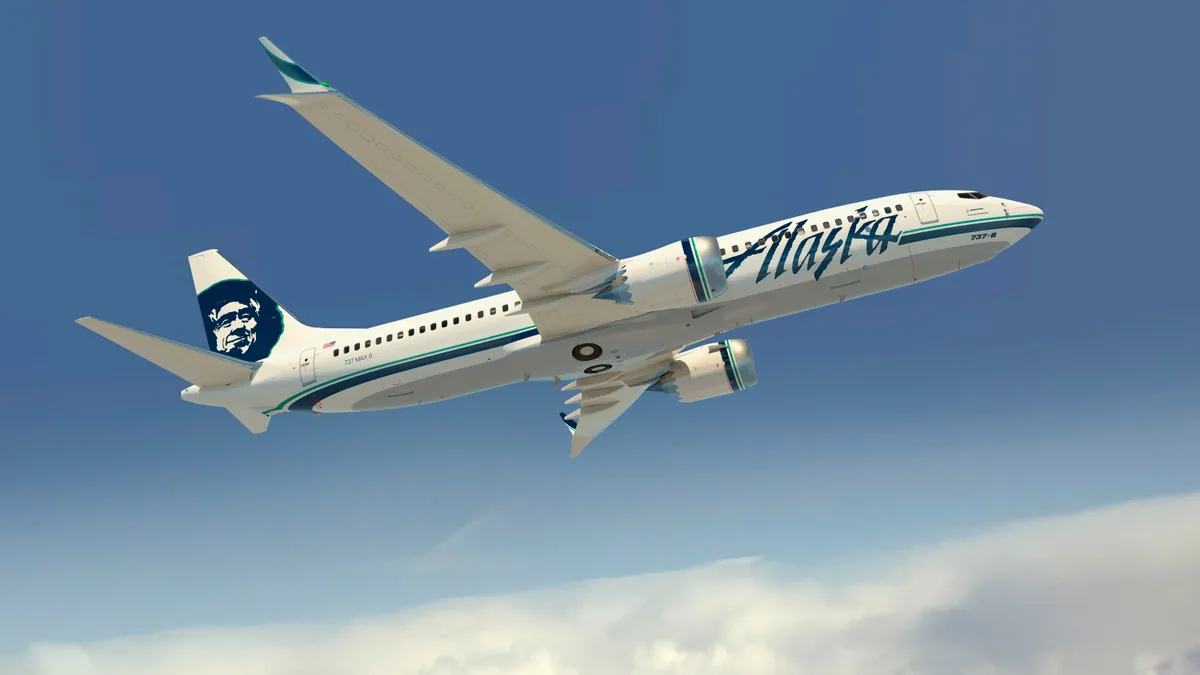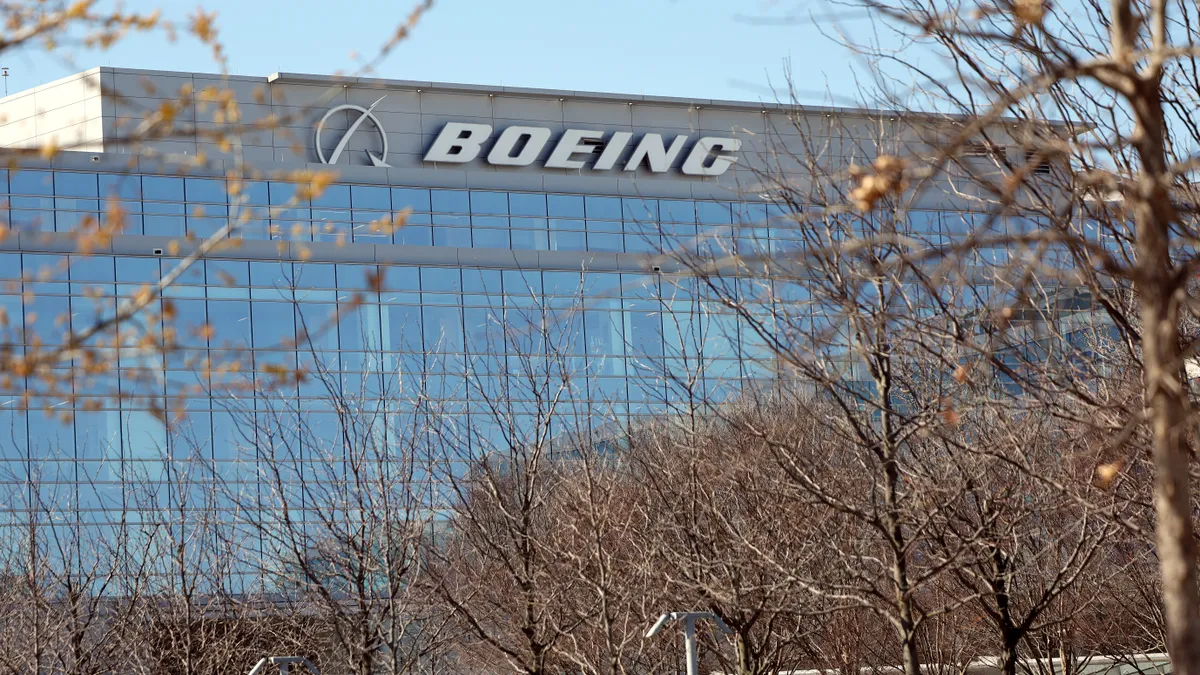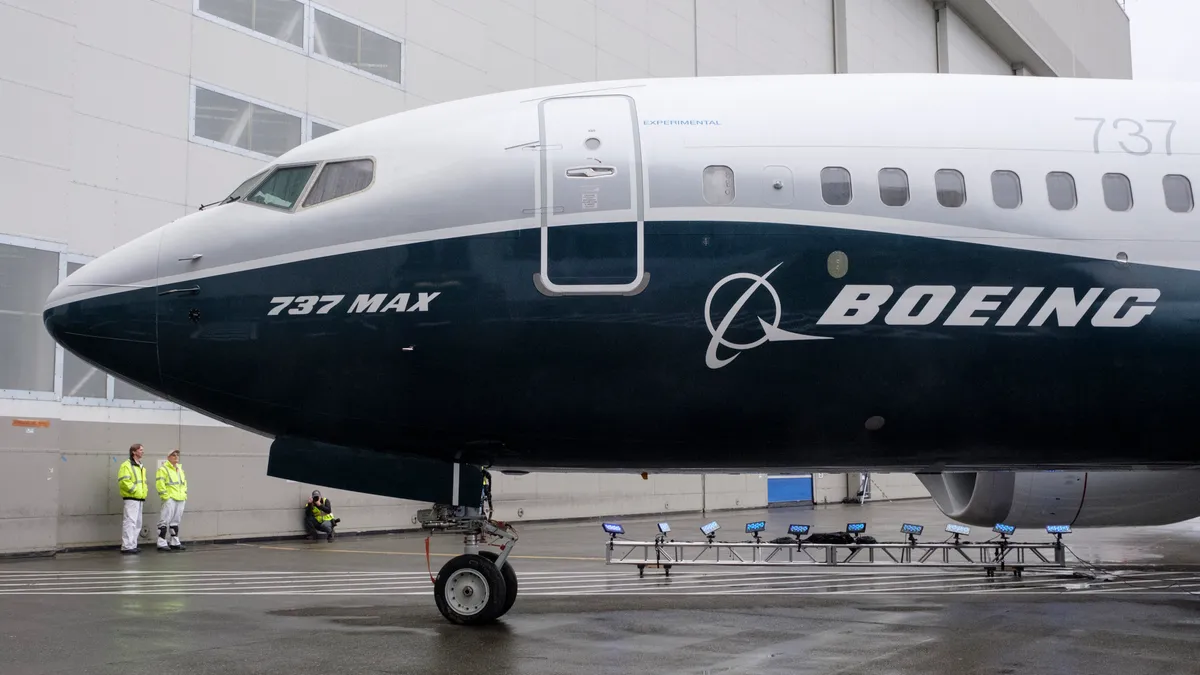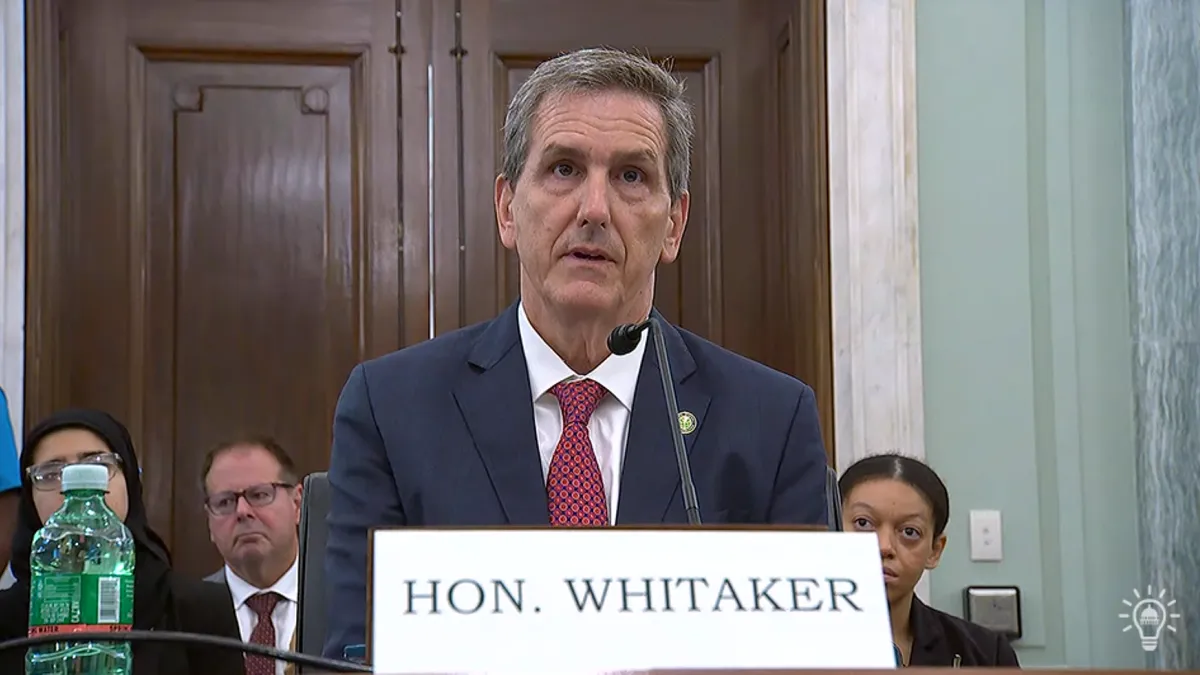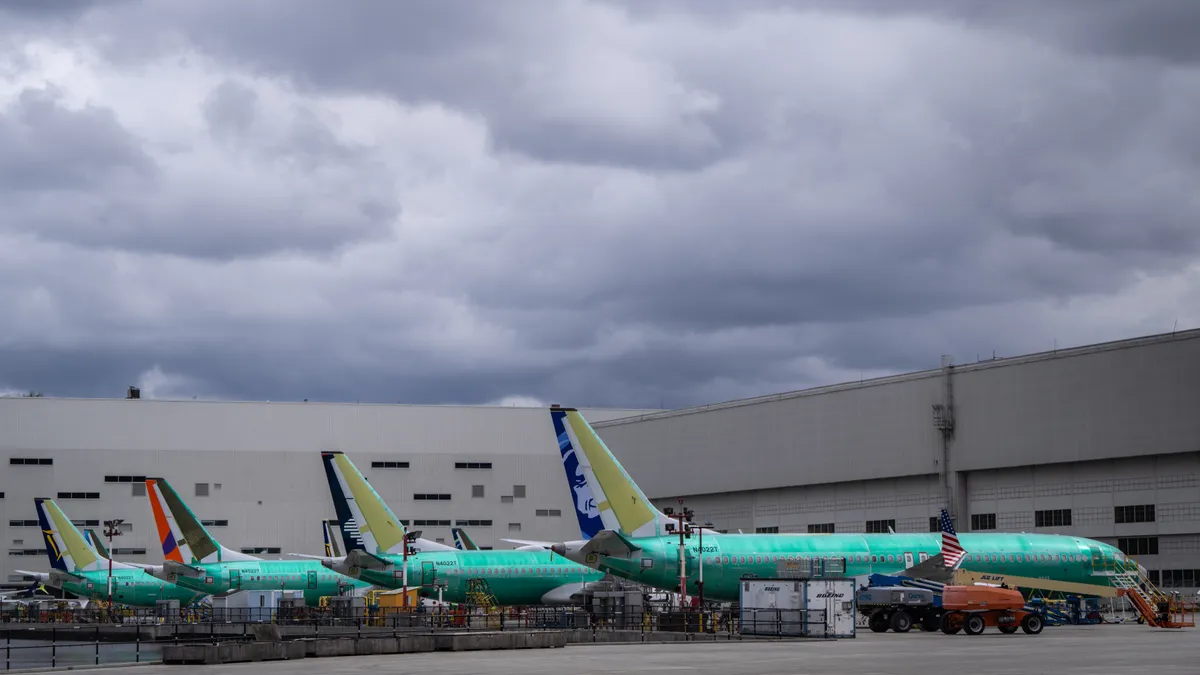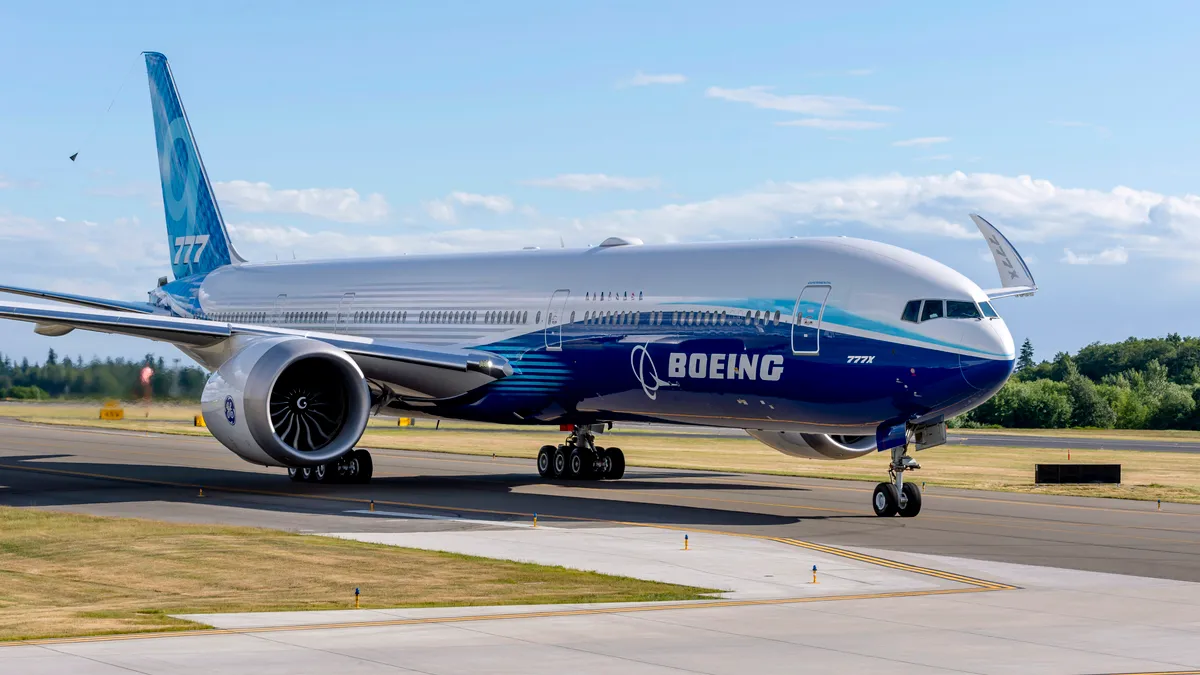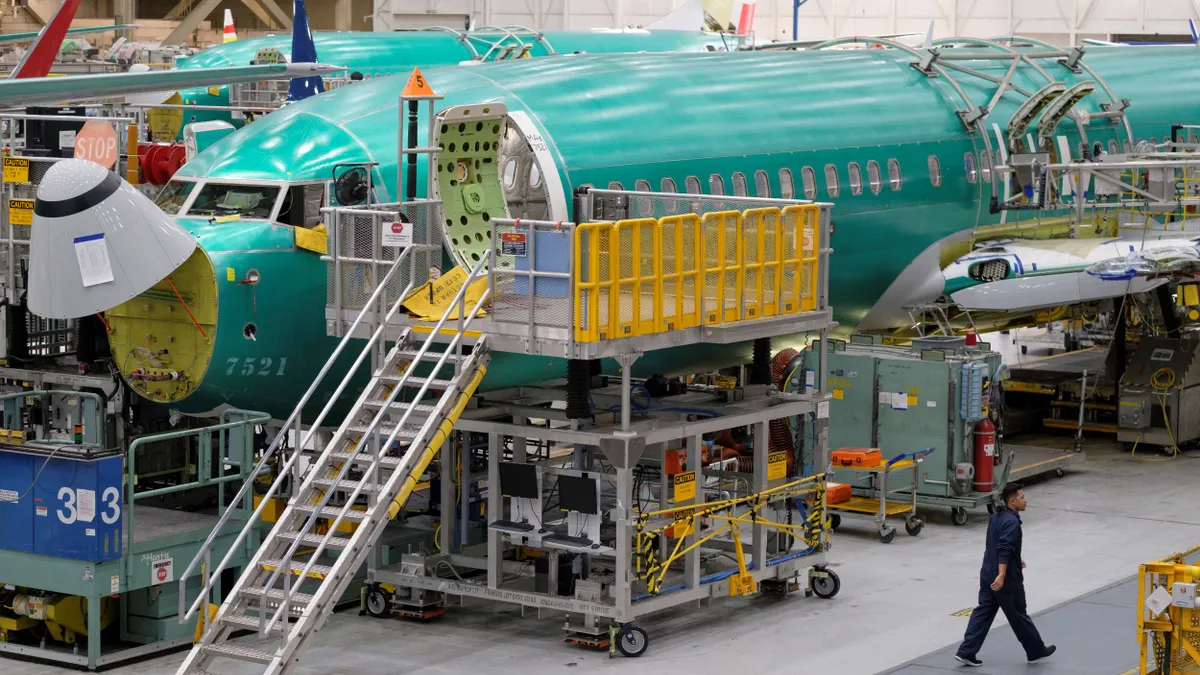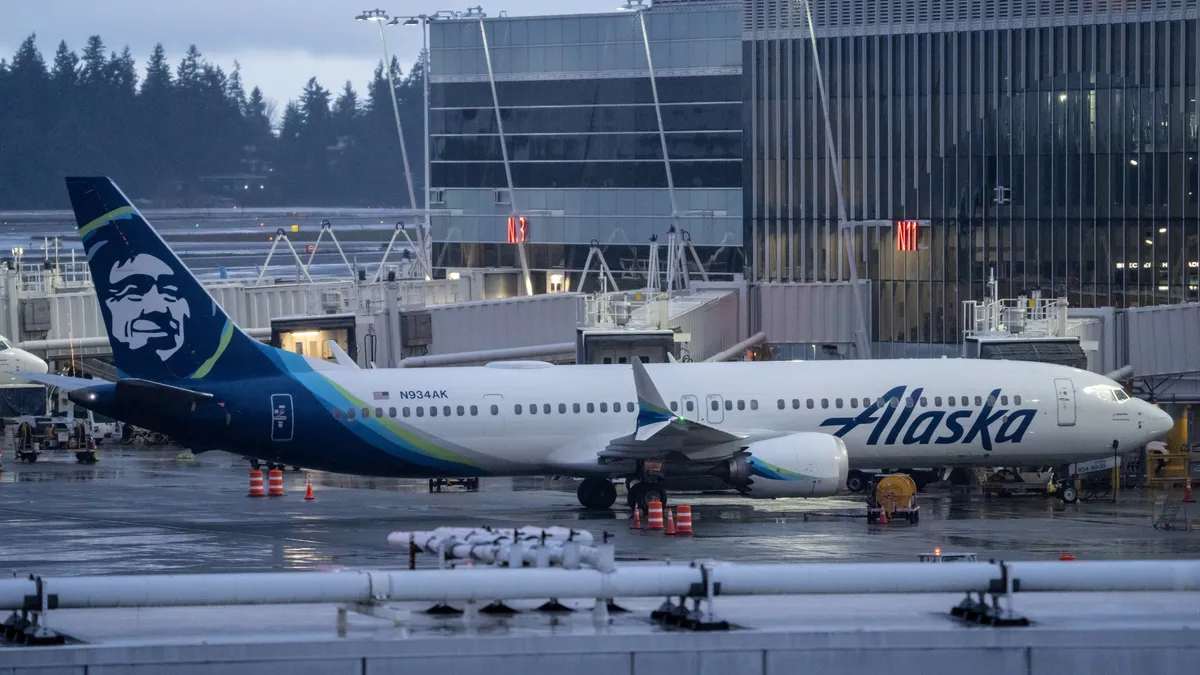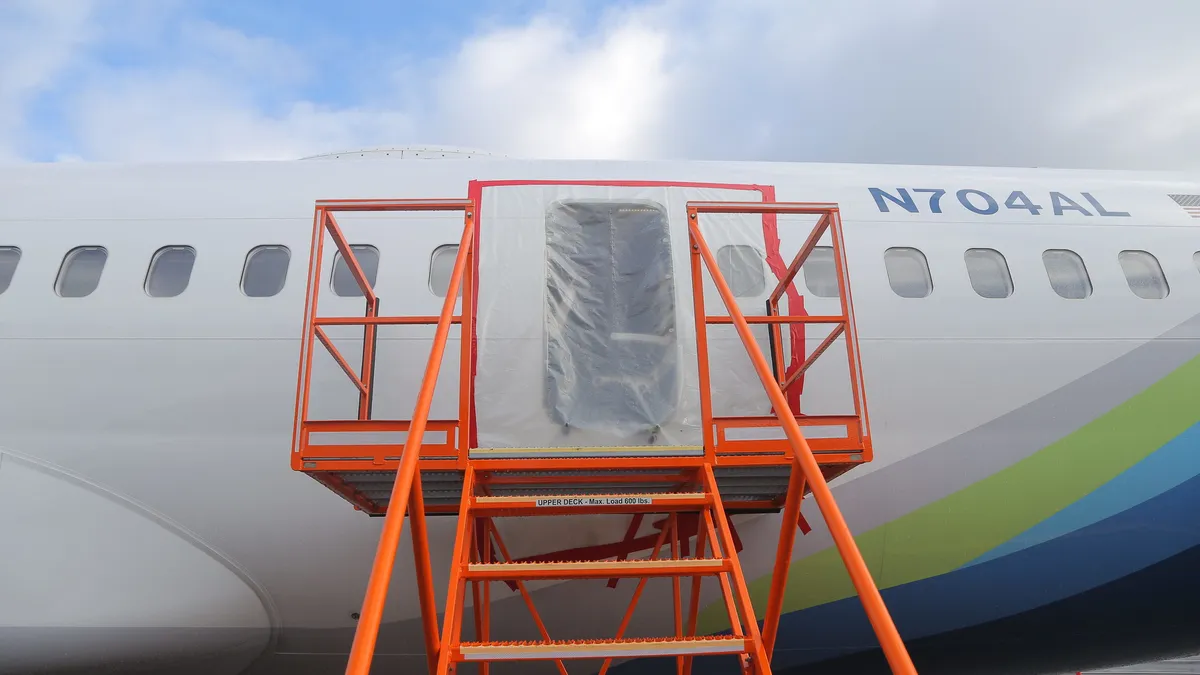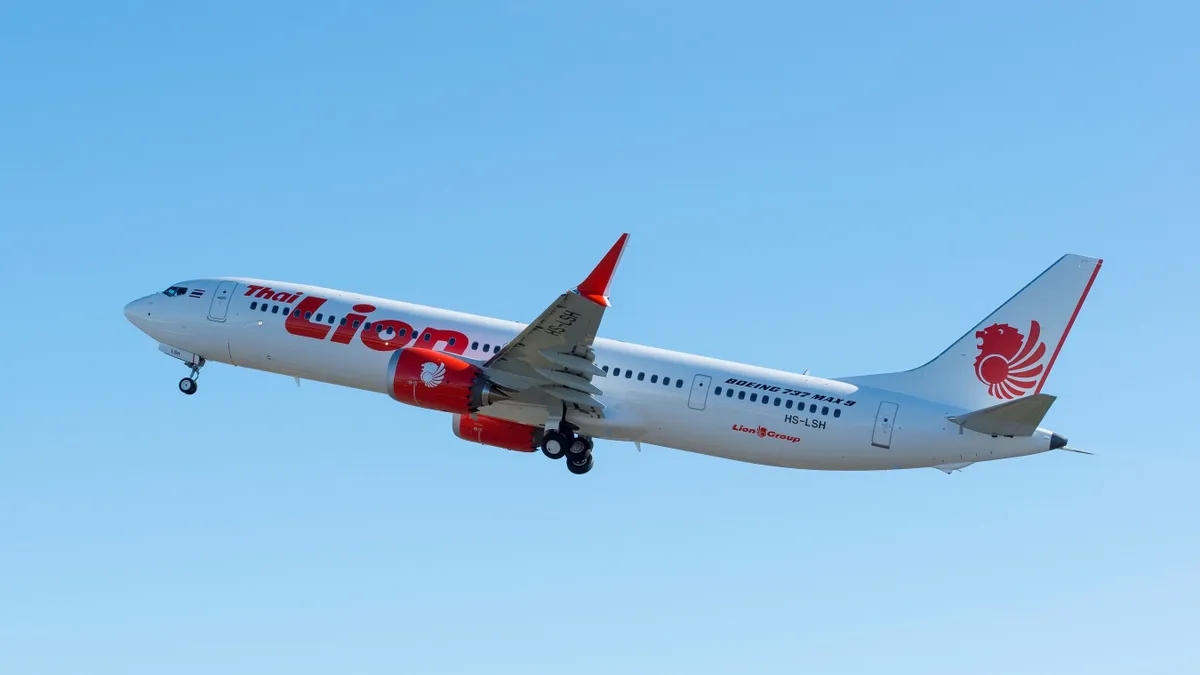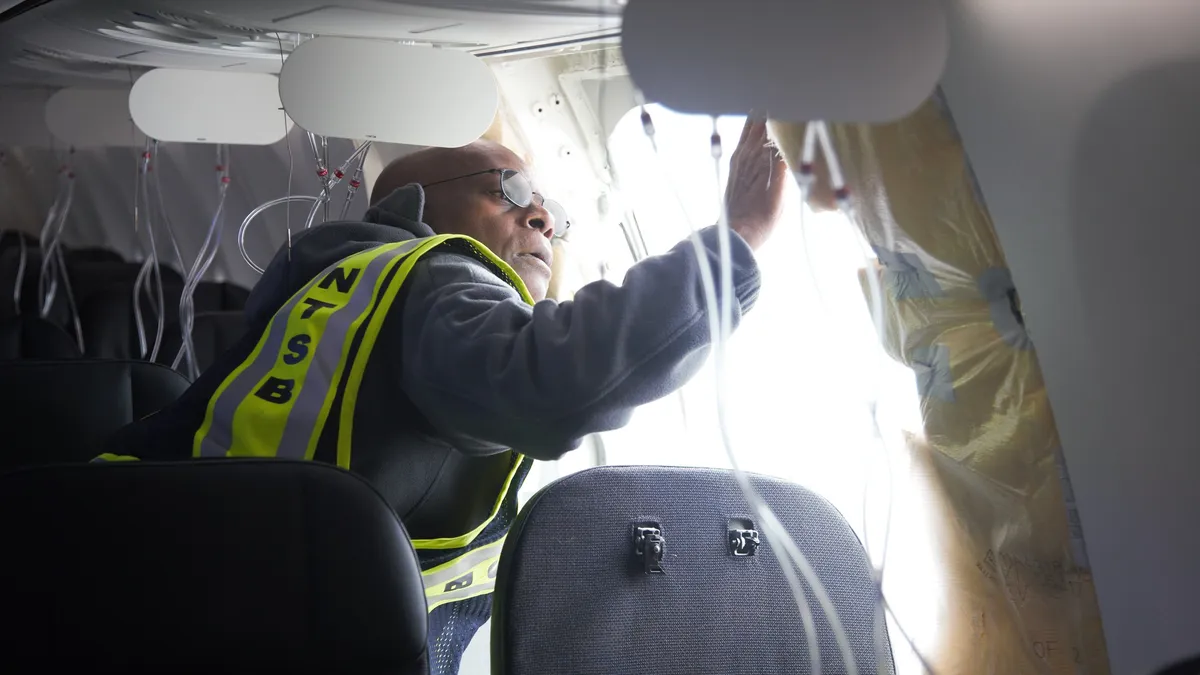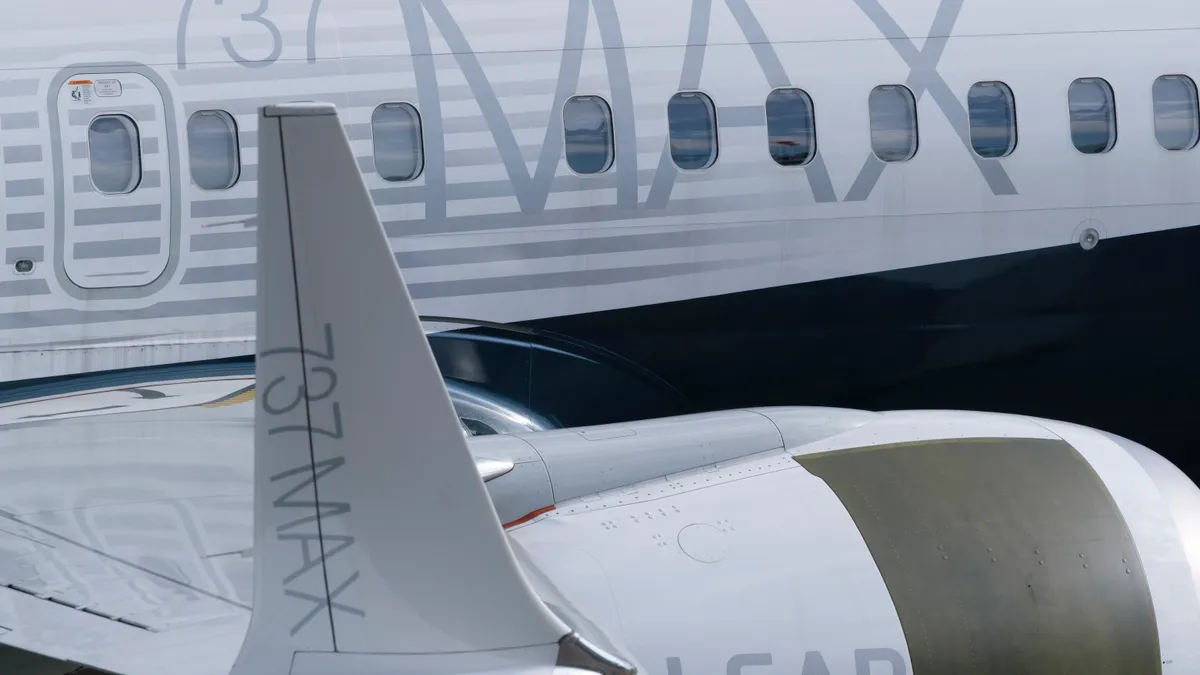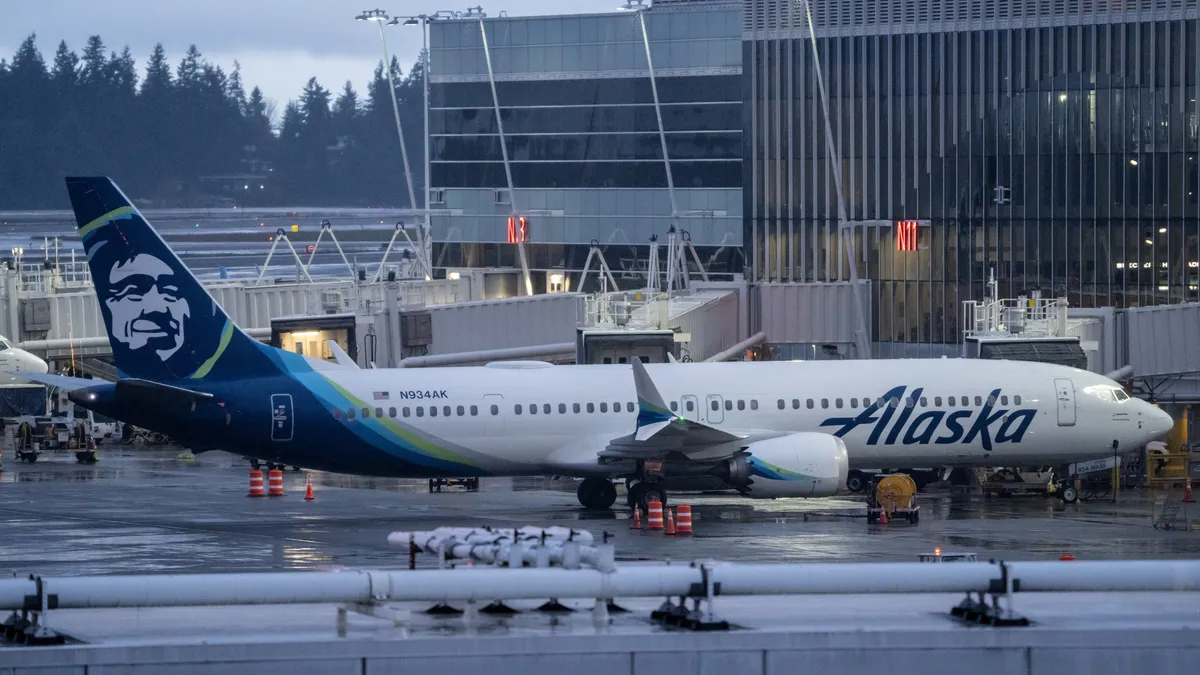Dive Brief:
- Boeing’s commercial aircraft deliveries in the second quarter improved roughly 63% to 150 aircraft, up from 92 planes for the same period last year.
- The aircraft giant delivered 104 of its 737 model aircraft, nine 767s, 13 of its 777s, and 24 of its 787 units. The estimated year-over-year jump also slightly outpaced the company’s 2023 Q2 deliveries.
- Boeing’s gross orders have also surged more than 328% YoY at 668, compared to 156 in the first half of 2025. This also outnumbered 2023’s H1 orders of 527.
Dive Insight:
The significant increase in orders can be attributed to several major deals with customers in the Middle East. The region is a big market for the company’s commercial and defense businesses, President and CEO Kelly Ortberg said at the Bernstein 41st Annual Strategic Decisions Conference in May.
That month, Saudi Arabia-based aircraft rental service AviLease ordered 30 Boeing 737-8 Max aircraft valued at $4.8 billion.
Additionally, Qatar Airways signed a deal to purchase 210 aircraft, making it the largest widebody order for Boeing, according to the May 14 press release. The purchase agreement includes 130 orders for 787 Dreamliners and 30 for 777-9s, with the option to buy an additional 50 planes of each model. An investment amount was not disclosed.
Boeing’s deliveries jumped over 63% YoY in Q2 2025
The tariff environment has led people to look for ways to rebalance trade with the United States, where there’s a “trade imbalance,” Ortberg said. “There's no better way to do that than through the purchase of aircraft, if you want to do that quickly.”
Boeing is “essentially sold out through the end of the decade,” Ortberg said. While Boeing has a strong backlog, its challenge is to ramp up production and deliver on that backlog, the CEO said. The company also wants to ensure it has available slots for customers who want its aircraft.
The Federal Aviation Administration altered Boeing’s production ramp-up plans, capping it at 38 planes a month after last year’s Alaska Airlines 737-9 Max plane's door plug blowout incident.
Since then, Boeing has been making progress on its manufacturing safety changes and ramping up production to reach its goal of 38 planes a month, which the company achieved on May 30, according to The Air Current. Boeing has been using key product indicators to measure the stability of its production system, which are part of its safety and quality improvement plan submitted to the FAA last year.
Boeing's orders and deliveries saw a 328% and 60% YoY hike, respectively
The safety and quality improvements have been paying off, Ortberg said.
“In some cases, going slow and deliberate has allowed us to actually go faster,” Ortberg said. “So we're going to keep disciplined here, and we'll move to the next rate when the indicators say we're ready to go there.”
Boeing will continue to produce aircraft at the 38 per month cap for a while to ensure stability in its production system, Ortberg added. Once the company achieves stability and the KPIs look good, Boeing will conduct a review with the FAA to increase the monthly cap to 42 planes. Boeing initially planned to produce at a rate of 50 per month by this year or within the 2026 timeframe, then-CEO Dave Calhoun said during an October 2023 earnings call.
From 42 units, the company aims to steadily increase production to 47 planes per month, the CEO added.
“Having said that, if we're not ready, we won't do it,” Ortberg said.
Boeing will also have a new FAA head to work with for achieving its production goals. The U.S. Senate voted 53-43 on Wednesday to confirm Bryan Bedford to lead the agency.
Bedford, who served as the CEO of airline company Republic Airways for over 25 years until July 2, told the Senate Commerce Committee at a confirmation hearing last month that he will hold Boeing accountable “to deliver a high-quality product safely.”









